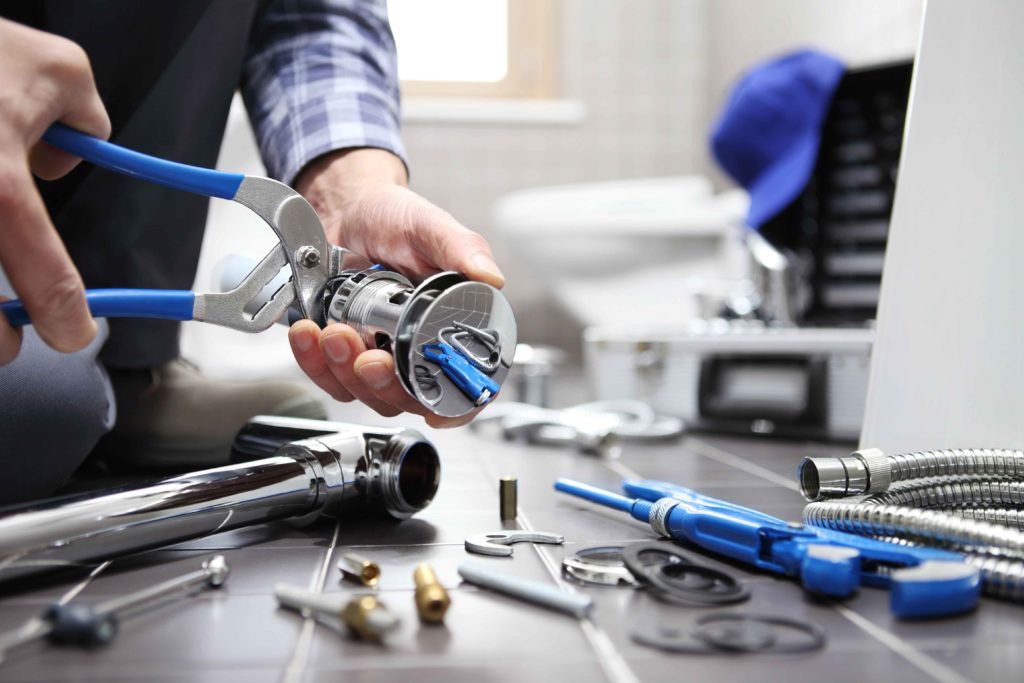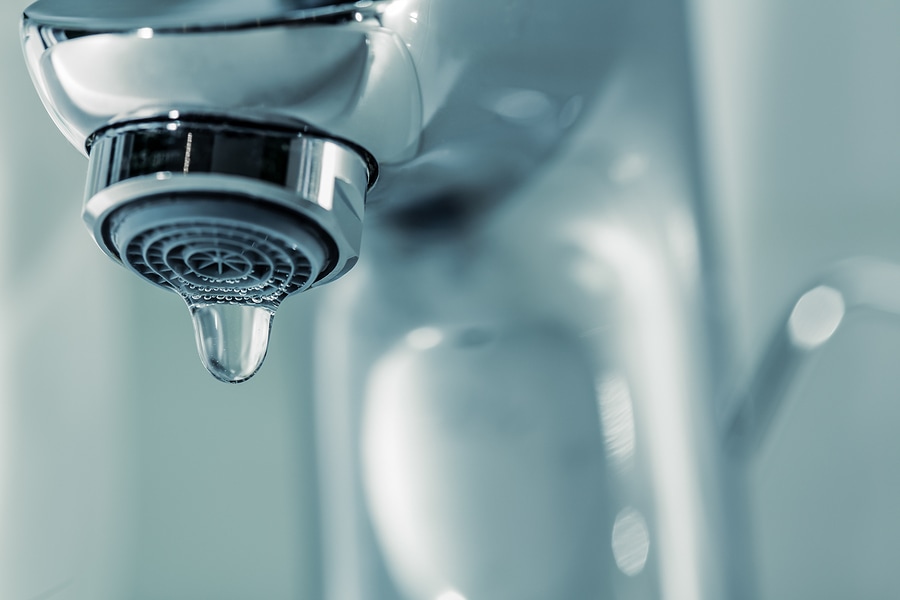Your Factors Behind Repairing a Dripping Faucet
Your Factors Behind Repairing a Dripping Faucet
Blog Article
They are making a few great pointers related to Why It's Important to Fix Leaky Faucets in general in the content just below.

Trickling taps might appear like a minor aggravation, but their effect exceeds simply the annoyance of the noise. From drainage to incurring unnecessary economic prices and health dangers, neglecting a dripping faucet can result in different repercussions. In this short article, we'll explore why it's important to address this common home problem promptly and efficiently.
Wastage of Water
Environmental Impact
Trickling taps add significantly to water wastage. According to the Epa (EPA), a solitary tap dripping at one drip per second can squander greater than 3,000 gallons of water annually. This not only stress water sources however also influences ecosystems and wild animals depending on them.
Financial Expenses
Boosted Water Costs
Past the ecological effect, trickling faucets can blow up water bills considerably. The gathered wastage over time translates right into greater utility costs, which can have been stayed clear of with prompt repairs.
Potential Residential Property Damage
Additionally, prolonged leaking can result in harm to fixtures and surface areas bordering the tap. Water buildup can cause discoloration, deterioration, and also architectural concerns if left ignored, causing additional fixing expenses.
Wellness Concerns
Mold and Mold Development
The constant visibility of wetness from a trickling tap develops a suitable atmosphere for mold and mildew and mildew development. These fungis not only jeopardize indoor air quality however also pose wellness threats, particularly for individuals with breathing problems or allergic reactions.
Waterborne Conditions
Stagnant water in trickling faucets can come to be a breeding place for bacteria and other virus, enhancing the danger of waterborne conditions. Impurities such as Legionella microorganisms thrive in stagnant water, possibly causing serious diseases when consumed or breathed in.
Do it yourself vs. Expert Repair
Benefits and drawbacks of Do It Yourself Fixing
While some might try to repair a leaking faucet themselves, do it yourself fixings include their very own set of difficulties. Without appropriate understanding and tools, DIY attempts can exacerbate the concern or result in incomplete repair services, extending the issue.
Benefits of Hiring a Professional Plumber
Working with an expert plumber ensures that the underlying cause of the trickling faucet is addressed properly. Plumbing technicians possess the knowledge and devices to detect and repair tap problems efficiently, conserving time and minimizing the danger of more damages.
Step-by-Step Guide to Taking Care Of a Dripping Faucet
Tools Needed
Prior to attempting to take care of a dripping faucet, collect the essential tools, including an adjustable wrench, screwdrivers, replacement parts (such as washing machines or cartridges), and plumber's tape.
Typical Tap Issues and Their Solutions
Determine the sort of tap and the details issue causing the drip. Common issues include worn-out washers, corroded shutoff seats, or damaged O-rings. Refer to maker directions or on the internet tutorials for step-by-step advice on repair services.
Safety nets
Regular Upkeep Tips
To avoid trickling taps, do routine upkeep such as cleaning up aerators, examining for leaks, and replacing worn-out parts promptly. Furthermore, consider setting up water-saving devices or updating to a lot more efficient components.
Importance of Prompt Fixes
Addressing trickling faucets as soon as they're noticed stops further water waste and prospective damages, ultimately saving both water and cash in the future.
Effect On Property Value
Understanding of Well-Maintained Residential Or Commercial Property
Keeping a home in good condition, consisting of resolving maintenance issues like dripping faucets, enhances its regarded worth and desirability among potential purchasers or renters.
Influence on Resale Value
Properties with properly maintained plumbing fixtures, including faucets, command greater resale worths in the realty market. Dealing with dripping faucets can add to a favorable impression throughout residential property assessments and arrangements.
Environmental Obligation
Individual Payment to Conservation
Taking duty for repairing trickling taps aligns with more comprehensive efforts toward water preservation and ecological sustainability. Every individual's activities jointly make a significant influence on protecting valuable sources.
Lasting Living Practices
By focusing on punctual repairs and embracing water-saving behaviors, people add to sustainable living techniques that profit both existing and future generations.
Verdict
Attending to a leaking faucet surpasses simple benefit; it's a crucial action toward preserving water, minimizing economic prices, and guarding wellness and property. Whether through DIY repairs or specialist aid, taking action to repair dripping taps is a little yet impactful way to advertise accountable stewardship of resources and contribute to a healthier, much more lasting future.
How to Fix a Leaky Faucet: Step-by-Step Repair Guide
A leaky faucet may seem like a simple annoyance, but if it's not fixed promptly, that leak could cost hundreds to potentially thousands. From water damage to mold, mildew, and high water bills, even a tiny leak can be catastrophic if left unattended. Damage like this can even affect the overall value of your home, so it's important to take the right approach for leaky faucet repair. You may need the help of a plumber in some cases, but we've got a few tips you can try on how to fix a leaky faucet before calling the pros.
Four Faucet Types
When you're learning how to fix a leaky faucet, the first step is knowing what kind of faucet you're working with! There are four common types.
Cartridge Faucets
Cartridge faucets come in one- or two-handled varieties. In one-handled cartridge faucets, hot and cold water combines in a single cartridge. In the two-handled versions, hot and cold water are controlled separately and mixed in the faucet.
Ball Faucets
Ball faucets have a single lever you push up and down to adjust the pressure and rotate to change the temperature. A slotted metal ball controls the amount of water allowed into the spout.
Compression Washer Faucets
They're the oldest type of faucet, but they're still used in many homes — especially older ones. Compression faucets have two separate handles that, when turned, raise or lower the washer that seals a water valve. This valve stops water from flowing through the faucet when it is turned off.
Disc Faucets
Disc faucets rarely need to be repaired due to their maintenance-free design. The water flow is controlled by two discs — the upper one raises and lowers against a fixed lower disc, creating a watertight seal. If your disc faucet starts leaking, you may need to replace the seals or clean residue buildup from the inlets.
Fixing a Leaky Faucet
Step 1: Turn Off the Water
Whether you're learning how to fix a leaky bathtub faucet or how to fix a leaky kitchen faucet, always turn off the water supply to your working area when you're fixing a leak. The last thing you want is a flood added to your list of things to fix.
Look for the shutoff valves below your sink or around the tub and turn them clockwise to stop the water flow. If your faucet doesn't have shutoff valves, you may need to turn off the water for the whole house. Check to make sure it's off by turning the faucet on. If nothing comes out, you're ready to start the repair.
Step 2: Take Apart the Faucet
How you disassemble your faucet depends on the type of fixture you have. You can use a flathead screwdriver to remove the caps on top of the handle or handles for cartridge and compression faucets. Inside, you should see handle screws. Unscrew these with a screwdriver to remove the handle.
Disc- and ball-style faucets will typically have an inlet screw near the handle, and removing that will reveal the interior of the faucet.
Detach the Valve Stem
For cartridge- and compression-style faucets, you'll see the inner valve stem or cartridge once you remove the faucet handles. If you have a compression faucet, unscrew the brass valve stem. If you have a cartridge faucet, pull out the cartridge. If your cartridge has been in place for a while, it may require some tools or extra force to remove it due to mineral deposits.
Examine and Replace Parts
Once you've removed the parts, check them out to confirm what needs to be replaced. You may see corroded rubber washers, O-rings, stems, or cartridges. On a ball-style faucet, check the seats and springs for damage.
If you need to repair a leaky disc faucet, check the inlet and seals on the lower disc.
Once you determine what parts must be replaced, visit your local hardware store. Bring the damaged parts with you to ensure you can purchase the correct components to replace them.
Clean Valves and Faucet Cavity
If you've removed a stem or cartridge, you may notice mineral buildup in the faucet's threads. Use white vinegar to clean the valve seat by soaking it for a few minutes, then scrub it away with a soft toothbrush and rinse with warm water. You can also clean the interior of the faucet in the same way.
Reassemble the Faucet
Once your faucet is cleaned and the required parts have been replaced, it's time to reassemble it. Put the pieces back together and slowly turn the water supply back on. Doing this slowly is crucial because too much initial water pressure can damage the new hardware you've just installed.
https://homewarranty.firstam.com/blog/how-to-fix-leaky-faucet

As an avid reader on How to Fix a Dripping or Leaky Faucet , I think sharing that excerpt was essential. Sharing is caring. Helping people is fun. Thanks a bunch for your time. Revisit us soon.
Report this page